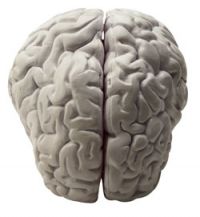Working memory
A new study by scientists at the University of California Davis has demonstrated how the short-term 'working memory' works , the part that controls the brain that connects sensory information together. This system captures a limited number of high resolution images in seconds instead of a large number of faded impressions.
People rarely move their eyes smoothly. According to Steven J. Luck, a professor of psychology at the Center for Brain and Intelligence at the University of California Davis, when our eyes move from one object to another, the visual system shuts down to minimize Visual noise . So the brain captures a series of shots at about 1/4 second, separated by very short gaps.
The working memory system makes the jerky beams smooth by retaining memories from each image so they can be connected. These memories usually last only for a few seconds."We use memory to work hundreds of thousands of times every day without noticing it," Luck said. The system is probably also related to intelligence.

(Photo: PhysOrg)
Luck and postdoctoral researcher Weiwei Zhang want to test whether memory works to store a fixed amount of high-resolution images or it is a flexible system that can store a small number of images. High resolution images or a large number of low resolution images.
They showed the volunteers the color squares for 1/10 second and then asked them to recall the color of one of the squares by clicking on a color palette. Sometimes they completely cannot recall colors and they just choose a random position on the color palette. However, when volunteers can remember the square, they choose a color quite close to the original color. Zhang developed a method to use these reactions to quantify how many images a person can store in memory and how accurate these memories are.
Luck said, 'This type is quite simple, but it took us years to realize that we should use it.' Researchers began work at the University of Iowa. Luck moved to Davis University in 2006 and Zhang in 2007.
The results show that memory works as a high-resolution camera, retaining three or four features with high detail. These features allow the brain to connect images one after another. However, while most digital cameras allow users to choose a low resolution and thus contain more images, the resolution of working memory seems fixed in each person. Individuals differ in the resolution of each characteristic and the number of storage characteristics varies.
People who can store more information in memory work than others who also have 'liquid intelligence' , which means higher ability to solve emerging problems. Working memory is also important in tracking objects that are currently out of sight and it also seems to be used when we need to recognize objects from strange angles.
The work of Lisa M. Oakes, another psychology lecturer at Davis University and colleagues, has shown that infants have the ability to use working memory quite early. Between the ages of 6 and 10 they develop rapidly and have a memory system working almost like adults.
Outside the visual area, working memory is used to store other intermediate values, for example when adding a sequence of numbers. It also plays an important role in learning new words, perhaps by allowing the pronunciation of a new word to be located in the listener's brain until the word's long-term memory is formed.
Luck compared the working memory system to the internal memory on a computer chip that allowed it to perform a series of calculations while accessing the main memory. In contrast, our long-term memory can be used to store large amounts of information over a long period of time, but it is time-consuming to access, similar to a computer hard drive.
This work is published online in Nature April 2.
- Memory process of the brain and methods to improve memory!
- Overtime work is prone to memory loss
- Science proves that green tea enhances memory
- A poor child may have a poor working memory
- Brain sharp thanks to thinking
- Good men do more than one woman at a time
- Social network abuse may cause temporary memory loss
- Working more than 55 hours a week increases the risk of arrhythmia
- Detects tremors of memory and memory
- 'Curse' of those who remember everything
- You can learn to possess super-powerful memory: remember 500 words in 5 minutes
- Find out how to recover memory
 'Fine laughs' - Scary and painful torture in ancient times
'Fine laughs' - Scary and painful torture in ancient times The sequence of numbers 142857 of the Egyptian pyramids is known as the strangest number in the world - Why?
The sequence of numbers 142857 of the Egyptian pyramids is known as the strangest number in the world - Why? History of the iron
History of the iron What is alum?
What is alum?